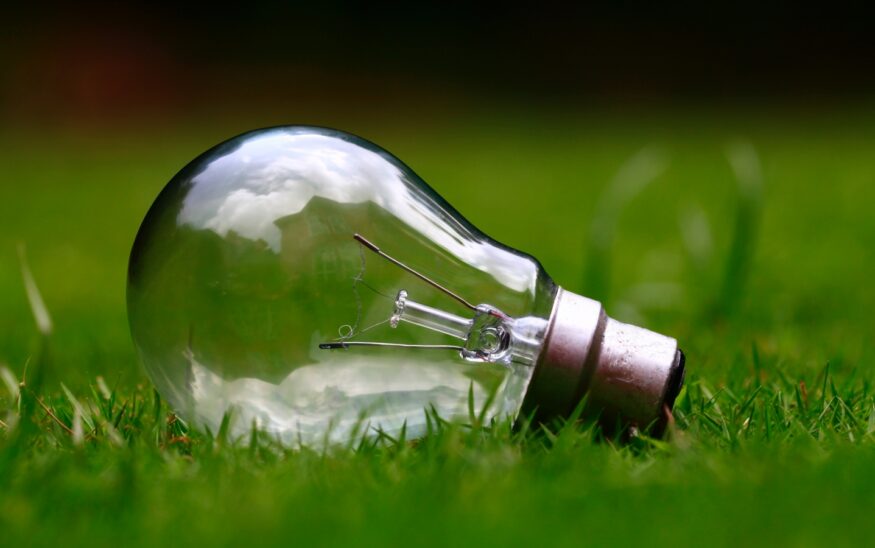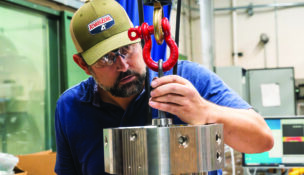Reasons to Embrace Sustainable Manufacturing
The new industry standard
Keith McAslan //May 9, 2018//


Reasons to Embrace Sustainable Manufacturing
The new industry standard
Keith McAslan //May 9, 2018//

Manufacturing is typically thought of as a business that does not care about the environment, housed inside facilities that are dark and dirty. However, manufacturing has changed dramatically over the past 10 years and embraced sustainable practices. Some larger corporations have added vice presidents of sustainability to their leadership teams.
Sustainability is the creation of products through economically sound processes that minimize the negative impacts on the environment, while conserving energy (lowering costs and improving profitability) and natural resources. Once being thought of as a green manufacturer was a nice talking point, now it has become an expectation of manufacturing to reduce water and energy consumption, while minimizing waste and decreasing dangerous emissions.
THE BENEFITS OF SUSTAINABLE MANUFACTURING
- INCREASE SALES – Sustainable manufacturing will make your business more attractive and marketable as 76 percent of millennials report their prioritization of the environment. Businesses that ignore sustainable practice could actually harm revenues. Surveys have found the three out of four millennials are willing to pay more for products and services from brands that are committed to positive social and environment impacts.
- SAVE ENERGY COSTS – Replacing incandescent bulbs and fluorescent tubes with LED lighting can reduce electricity usage related to lighting up to 80 percent. Since electricity for lighting usually consists of 35 percent to 40 percent of the typical electrical bill an 80 percent reduction is significant with a 3-year or less payback. Additionally, converting to a renewable energy source, such as wind or solar, can stabilize energy cost with a much longer payback period.
- INCENTIVES – There are government incentives, tax credits, grants and utility company rebates for businesses to reduce the ultimate cost of investing in sustainable practices. Most utility companies will provide a free service of an onsite inspection and survey of
- your facility with recommendations to reduce energy costs. Small and medium size manufacturers may be eligible to receive a free assessment by the Dept. of Energy’s Industrial Assessment Center (“IAC”). IAC’s have typically identified more than $130,000 in annual savings opportunities for every manufacturer assessed, nearly $50,000 of which is implemented during the first year following the assessment.
- WORKPLACE MORALE – When employees at all levels are asked to identify and implement green practices it typically spurs collaboration and teamwork. Sustainability usually leads to increased innovation as employees are inspired to pursue research and development of new products.
- IMPROVED HEALTH + SAFETY – Implementing sustainable practices in manufacturing reduces water and energy usage, minimizes waste and decreases hazardous emissions. The additional benefits include a decrease in the carbon footprint and improved health and safety of your employees and community.
WHERE TO START IMPLEMENTING SUSTAINABLE PRACTICES
One of the easiest ways to embark on the sustainable manufacturing path with is by converting from incandescent and fluorescent lighting to LED lighting.
WHY LED LIGHTING?
- LED lighting provides an immediate reduction of electricity costs as LED consumes at least 75 percent – 80 percent less energy and lasts 25 times longer than incandescent lighting according to the U.S. Dept. of Energy.
- Reduction in facility maintenance costs as bulbs and lamps have a longer operational life and often have a 10-year warranty.
- Utility companies often offer significant financial incentives for businesses to reduce power consumption by switching to LED lighting
- LED lighting and controls provide a comfortable and productive visual environment while effectively monitoring energy consumption by controlling the lighting. Switching LED lighting on/off frequently does not affect their usable life of light emission.
- LED lights are free of toxic chemicals as most conventional fluorescent bulbs contain mercury. There is no health risk if an LED happens to break due to the fact it is a solid-state object.
- LED lighting can improve security and safety with the efficiency, long life and weather resilience by keeping the lights on for longer periods of time.

























